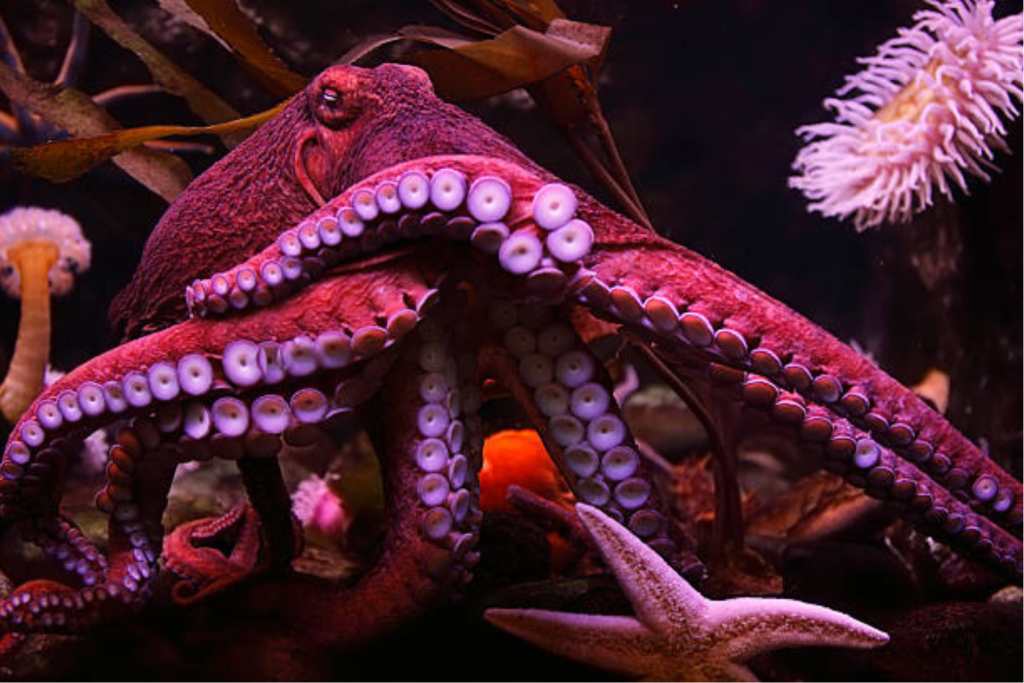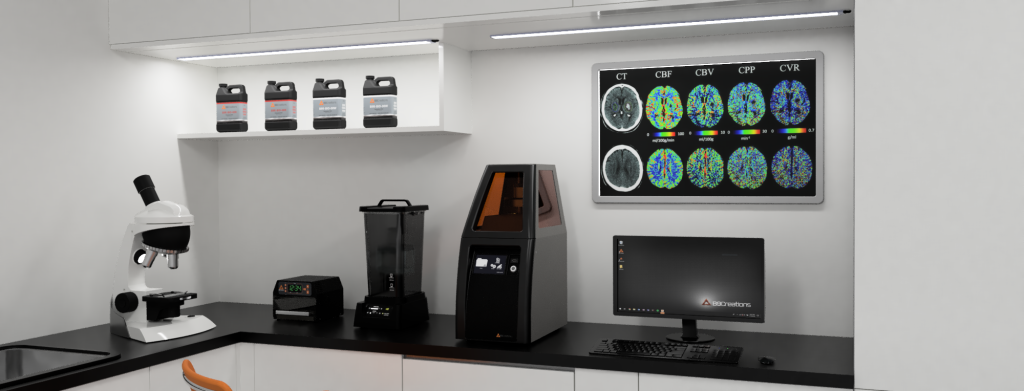South-Dakota based resin 3D printer manufacturer B9Creations development of 3D printed adhesive skins biomimicking octopus tentacles.
“This groundbreaking display of biomimicry has the ability to tackle complex human challenges and has immense potential in several realms,” claim B9Creations. “This combination of adhesion tunability, sensing, and control is unparalleled in synthetic adhesives.”
These skins are said to possess the advanced manipulation, sensory, and control characteristics of octopuses and other cephalopods, offering strong and reversible underwater adhesion. The company claims that this new development has the potential to serve a number of advanced applications, including underwater adhesives, medical devices, underwater construction, marine exploration, diving and swimming equipment, and within the national defense sector.

Octopus inspired 3D printed skins
Whilst a number of projects have already drawn inspiration from the mechanisms and characteristics of cephalopods, current adhesive-based manipulators generally lack sensing and control capabilities. Those which do, utilize bulky optical and sound-based proximity sensors. Given their size, integration of these sensors into synthetic adhesives is restricted, and their manipulation and grasping capabilities are limited.
This new approach incorporates switchable adhesive components alongside an integrated sensory system. Processing and control mechanisms for automatic adhesion activation and release are also incorporated. It is claimed that this tightly integrated system can intelligently control multiple adhesive elements, allowing for dexterous manipulation within both dry and wet environments.

In fact, the research team has already created a wearable adhesive glove. Each finger of the glove incorporates an adhesive element created using molds produced by B9Creations 3D printers. Micro-LIDAR optical sensors are also added for object proximity detection, which combine with the rapidly switchable adhesives to enable real-time object manipulation. It is claimed that these gloves would provide better grip for swimmers and divers. Other biomimicking wearables, such as wetsuits and swimming caps, could also be developed to reduce drag, allowing the user to move more efficiently through water.
Elsewhere, within the medical sector, B9Creations suggests that the properties of this octopus-inspired skin could be used to produce medical adhesives that stick to organs and tissue. Underwater construction, such as pipeline and offshore wind turbine installation projects, is also pointed to as a potential use.
The grip of underwater robots could also be bolstered through this new technology, enabling greater maneuverability and dexterity when collecting samples and exploring deep sea habitats.
Finally, within the defense industry, the new underwater adhesives could be used to produce robots or equipment that can securely adhere to the sides of ships and submarines. Additionally, this technology could also be leveraged to create anti-tamper devices for sensitive equipment and infrastructure.

Biomimicry within additive manufacturing
Biomimicry is by no means a new concept within additive manufacturing. For instance, last year a team of international researchers drew inspiration from the protective structures found in mantis shrimps to produce damage-resistant ceramic composites. Digital Light Processing (DLP) 3D printing was used to produce the complex ceramic composites structures, which increased in strength by up to 213% when compared to pure ceramic. Moreover, the researchers found that these bio-inspired structures increased hardness by up to 116x, and enabled complex geometries which would have been impossible to produce using conventional techniques.
Similarly, back in 2021, researchers from the University of Freiburg and the University of Stuttgart developed a method of 4D printing wearable medical devices that automatically adjust to a patient’s anatomy. The researchers drew inspiration from the propagation mechanism of the air potato plant (Dioscorea bulbifera) when developing this process. Through this method, the scientists succeeded in 4D printing a self-tightening orthotic wrist splint. “Our work constitutes an important step in expanding the design space and tunable functionality of bio-inspired solutions,” commented study co-author Tiffany Cheng.
Subscribe to the 3D Printing Industry newsletter to ensure you keep up with the latest 3D printing news. You can also follow us on Twitter, like our Facebook page, and subscribe to the 3D Printing Industry Youtube channel to access more exclusive content.
Are you interested in working in the additive manufacturing industry? Visit 3D Printing Jobs to view a selection of available roles and kickstart your career.
Featured image shows the B9Creations research lab. Photo via B9Creations.


